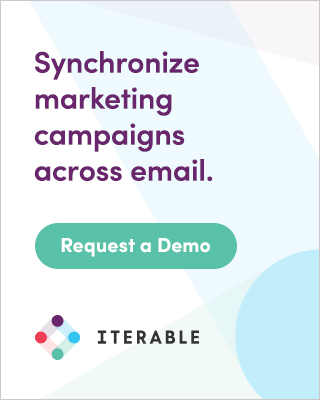The digital landscape continues to evolve and it was only a matter of time when banner advertising caught up. Enter HTML Banner Advertising – one of the latest trends to strike marketers.
But are they really that effective? How do we know which ad to go for? This blog takes a quick look at both sides of the coin to settle the debate.
What Are Static Banner Ads?
Static banners are images with advertorial content that can be used on websites, social media platforms, and emails. They have many benefits, such as being able to target specific demographics and easy content updates among others. Usually, these are the ads that you see on sidebars while visiting web pages and consist of the following elements:
- An image
- Copy
- A CTA
‘Static’ signifies that the ads consist of no movement, frames, or transitions. All elements are frozen and simply for the purpose of displaying information.
What are HTML Banner Ads?
HTML or HTML5 Banner Ads are similar to Static Banner Ads in function. But they go a step further to add interactivity to the advert, making it more attention-grabbing. Such ads can consist of:
- Image files
- Video files
- HTML file
In the HTML file, it is possible to include source links for videos, graphics, and images. It might even consist of HTML code that drives animation or makes the advert responsive.
For example, consider the homepage of ReallyGoodEmails that sports this banner advertisement powered by a GIF. With changing text, the ad is able to target users that use various marketing channels, such as – direct mail, social media, emails, etc.
Anatomy of a Great Banner Ad
To understand which type of banner ad would be best for your campaign, we need to first look at the constituents of a great banner advert. A well-strategized banner advert consists of:
- Layout: They can have many different sizes. The goal here is to figure out the banner advert size that would perform the best for your campaign.
- Graphics: Appropriate and relevant graphics are the next step. What visuals should the graphics include?
- Color: The right colors can invoke emotions, keeping your ads message and brand perception in sync.
- Simplicity: Static ads are usually simple while HTML ads are comparatively extravagant. Figuring out your marketing sauce is the next step.
Do Banner Ads Still Work?
Contrary to popular belief, Banner Ads are still far too effective to be shunned altogether. Even if it means facing an army of ad-blocking software in the process. Why? Great Banner Ads can help you to:
- Boost the CTR of your marketing campaigns and rake in revenues.
- Provide an alternative marketing strategy/channel to hedge your marketing bets.
- Provide a super quick go-to-market strategy for any new campaign.
But with their apparent benefits out of the way, which type of banner ad should you go ahead with? Let’s find out.
Static Vs HTML Banner Ads: Which one to choose?
If you are looking for an absolute answer, we would hate to disappoint you. The truth is, both static and HTML Ads can be your go-to banner mantra depending on your use case.
But we would surely help you arrive at the most appropriate decision. To begin, consider the following factors before making your banner ad choice:
- Objectives of your marketing campaign.
- The budget you have set aside for banner ads, including production time and costs.
- The message and branding that you want to portray.
- Devices that your target audience is most likely to use.
- Advertising placements on the media channels in your distribution strategy.
- Past engagement behaviors of prospective customers.
- Ad re-messaging and retargeting strategies.
- Ad testing, evaluation, and measurement statistics.
Each of these factors can ultimately affect your decision.
When To Go With Static Banner Ads?
Due to their apparent simplicity, Static Banner Ads may not always seem like the obvious choice. But it is the lucidity that plays in their favour.
Let’s say that you have an urgent message to convey to your audience (such as a limited flash sale) and want them to take quick action. Depending on the context, well-placed Static Banner Ads might play in your favor here since they reach the CTA sooner (read immediately) when compared to HTML banner adverts. This is especially true if you find the behavior of your prospects to be impatient or impulsive.
Similarly, if you have a simple marketing message to deliver to your audience along with a relevant eye-catching image, Static Banner Ads can again be the way to go. Benefits of Static Banner Ads include:
- Time Commitment: Static banner ads are a time-efficient way to promote your campaign without the hassle of managing or creating content multiple times. Once you create the ad, it can be published on multiple channels for easy promotion and instant results!
- Regulation: There are few highly regulated industries where each website or marketing content must be strictly reviewed. Static banner ads keep things simple in such situations, helping the marketing and legal teams to work in cohesion.
- Quicker Deals: Static banner ads may sometimes work well for first-time visitors since they are better for one-time and quick deals that are more CTA reliant.
- Cost-effective: Since they take considerably less time and effort to create compared to HTML banner ads, the cost of marketing is much lower.
- Easier Editing: Static banner ads might be a better option for marketing campaigns where the offering is dynamic and ever-changing. They are easier and cost-effective to edit than HTML ads.
When To Go With HTML Banner Ads?
For relevant campaigns, there is no denying the fact that HTML ads can stand out. Since they include rich media elements such as video, audio, and animation, users are more likely to engage with them. And contrary to their predecessor (archaic flash animation), they do not require the integration of any third-party plugins to function.
HTML Ads also give banners a lot more flexibility in terms of placement and distribution. Benefits of HTML banner ads include:
- Countless Options: Multiple ad types and ad scales can be used across devices. This gives marketers the ability and incentive to A/B test exhaustively and arrive at the best performing ad.
- High Responsiveness: HTML Banner Ads are driven by HTML codes at their base. This means that they can be made to be highly responsive according to the platform or screen size of viewers.
- Better Engagement: Marketers can experience better CTRs for interactive or animated HTML Banner Ads since they have the potential to better grip viewer attention.
- Ad Optimization: Marketers have the ability to use data functions such as heatmaps and real-time analytics to constantly revise banner designs.
- Higher Reach: Depending on your audience segments and buyer personas, different segments can engage with varying media elements. For videos within HTML ads, marketers have the opportunity to boost their audience reach considerably.
- Dynamic Engagement: Since HTML Banner Ads make use of multiple media elements, they can be used to target different segments of the audience and at the most appropriate engagement time. This can significantly boost engagement due to hyper-personalization.
Final Takeaway
Rich media HTML Banner Ads are surely the way to go forward, provided that you have the resources and the time to make them work. With a reduced attention span of readers and the availability of a plethora of digital choices, creative banner ads can better grip audiences and make your messaging stand out.
In case you are just getting started with banner advertising and are looking for a quick fix to get your campaigns off the ground with minimal resources, Static Ads are the way for you.
No matter what choice you make, always follow the golden rule of marketing – the ROI of your campaigns must outweigh your investment!Need any help with creating static or HTML banners that work? Our expert team can help.





Prajakti Pathak
Latest posts by Prajakti Pathak (see all)
CRM Solutions: The Big Debate on Horizontal Versus Industry-specific Tools
Comprehensive Guide to Holiday Email Marketing: Everything You Ever Wanted to Know